How to Use YouTube Ads for Therapy Service Promotion
Maximizing Your Therapy Practice’s Reach Through YouTube Advertising


How to Use YouTube Ads for Therapy Service Promotion
Harness the Power of Video Marketing for Your Therapy Practice
In today’s digital-first world, online advertising platforms like YouTube offer unparalleled opportunities for therapy providers to connect with potential clients. With over two billion users worldwide and a significant portion of the American population engaging with the platform, YouTube is an ideal channel to showcase your expertise, humanize your practice, and foster trust. This guide explores effective strategies to utilize YouTube ads for therapy promotion, from creating authentic content to ethical advertising practices.
Building a Strong YouTube Presence for Your Therapy Practice
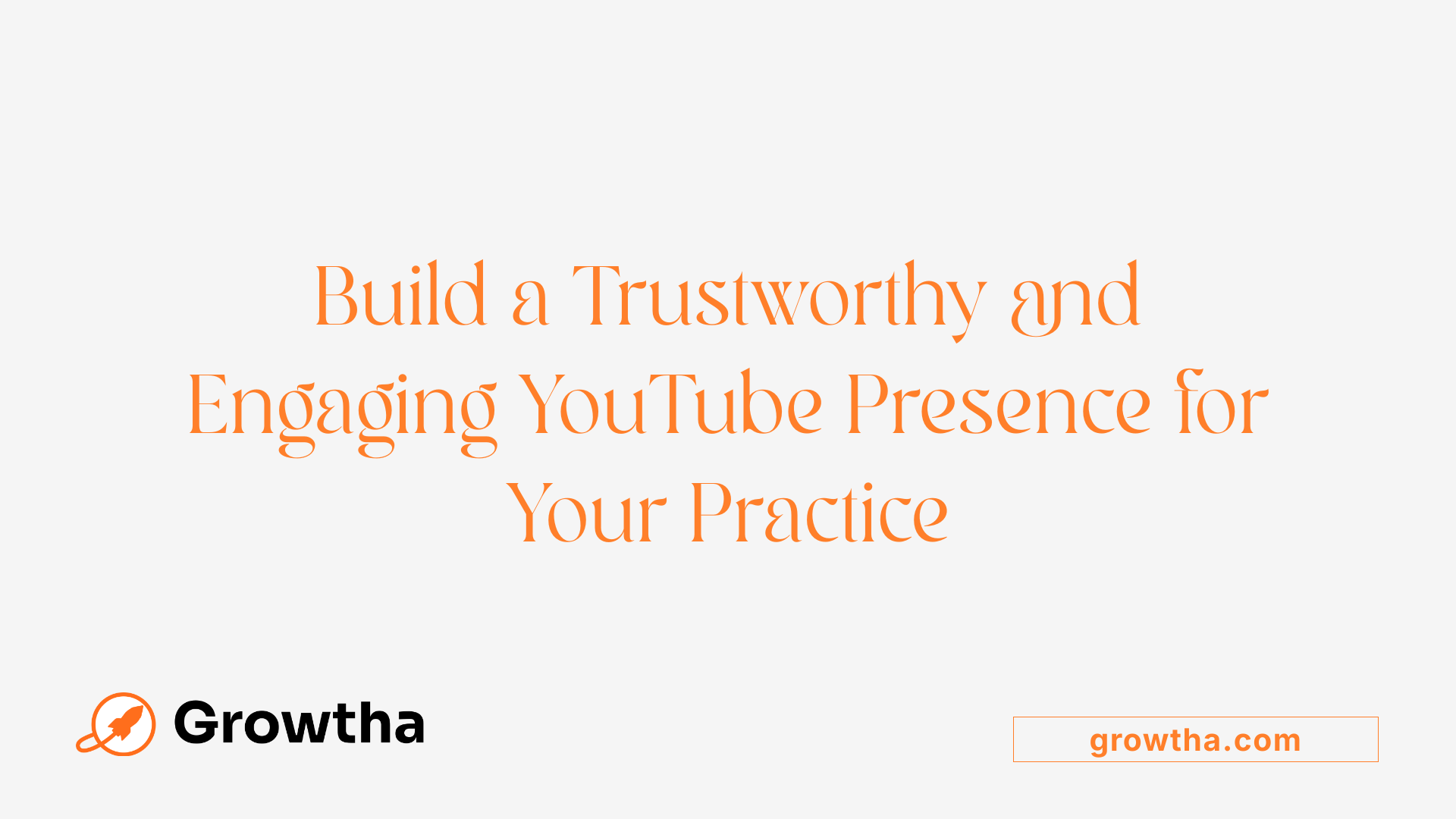
How can embedding YouTube videos on websites support therapy marketing efforts?
Embedding YouTube videos directly on your therapy practice website can be a powerful marketing tool. These videos help create a personal connection with visitors, giving potential clients a glimpse of the therapist’s personality, approach, and expertise. Authenticity beats perfection; less polished videos can be equally effective in building trust. For example, a warm introduction or answers to common questions can make your practice more relatable.
Sharing videos across various platforms—your website, social media, and blogs—increases visibility and encourages engagement. YouTube’s extensive reach, with over two billion users, means your content can attract a broad audience actively seeking mental health support. Using videos to demonstrate your skills and humanize your practice can lead to higher client inquiries, making embedding videos an essential component of your broader marketing strategy.
What are the best practices for creating and optimizing YouTube advertising campaigns for therapy practices?
Launching effective YouTube ad campaigns requires thoughtful planning. Start by identifying your ideal clients through demographic, interest, and intent targeting to ensure your ads reach the right people. Create genuine, high-quality videos that communicate trust, professionalism, and compassion—highlighting your expertise and services.
Use varied ad formats such as in-stream ads, discovery ads, or short bumper ads to diversify reach and test what works best. Always include clear calls-to-action, like scheduling a consultation or visiting your website. Monitoring campaign performance metrics—e.g., engagement rates, conversions, and cost-per-click—helps you refine targeting and ad content.
Supporting your ads with an optimized website, local SEO, reviews, and active social media presence boosts overall visibility. Make sure your online presence aligns with your ad campaigns, providing a seamless experience for potential clients from click to contact.
Targeting the Right Audience on YouTube
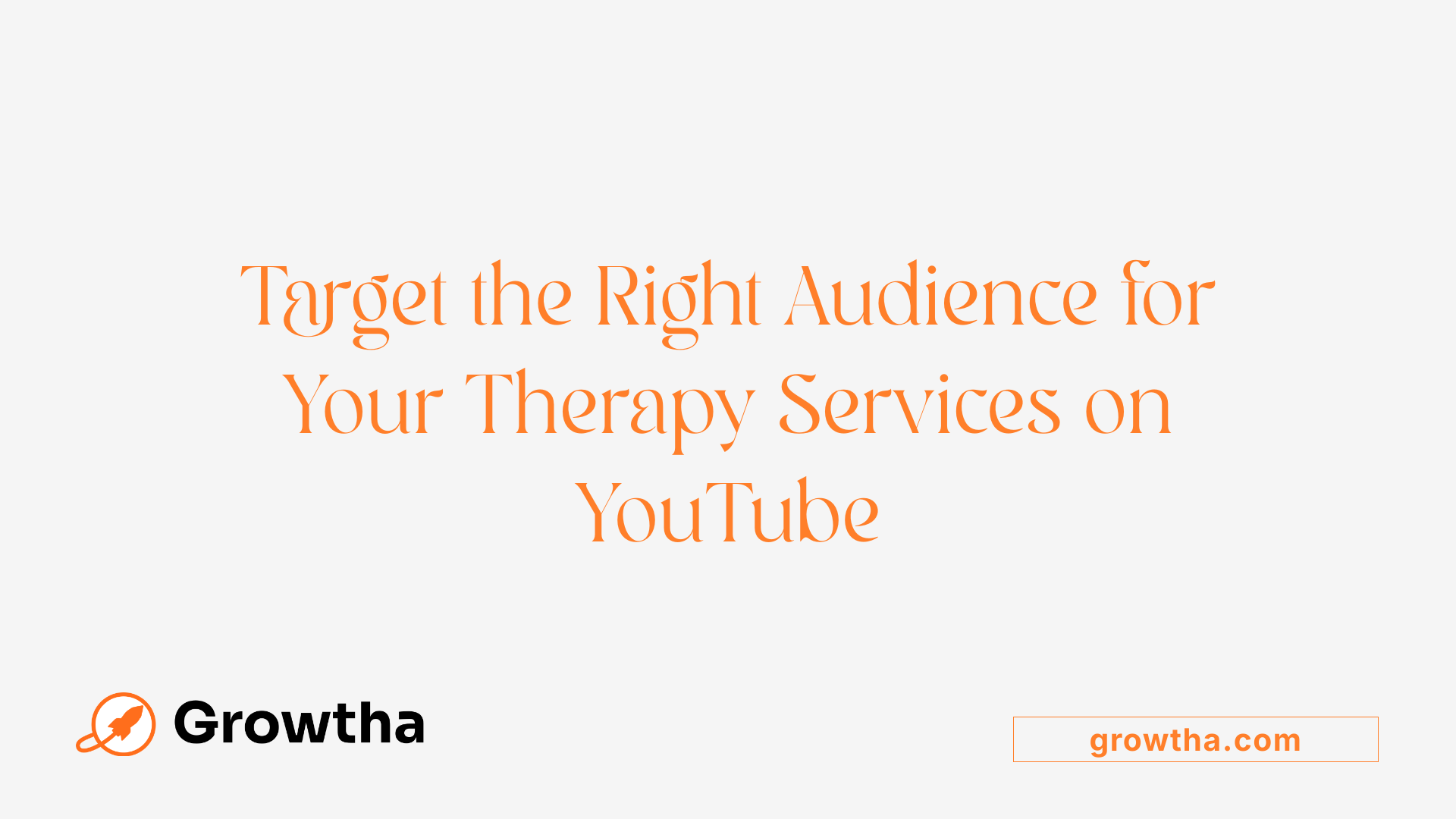 Therapists aiming to connect with local clients on YouTube must leverage several targeted advertising strategies. Using Google Ads' advanced options allows providers to filter audiences based on demographics such as age, gender, and interests related to mental health. Geographic targeting is also essential, enabling ads to appear specifically within a practice’s service area.
Therapists aiming to connect with local clients on YouTube must leverage several targeted advertising strategies. Using Google Ads' advanced options allows providers to filter audiences based on demographics such as age, gender, and interests related to mental health. Geographic targeting is also essential, enabling ads to appear specifically within a practice’s service area.
Creating customized keywords and ad copy helps attract those actively searching for therapy services. Incorporating local search terms and tailored messaging ensures the ads resonate with potential clients seeking nearby support. For example, using keywords like "therapy near me" or "counseling in [city]" can improve relevance.
Enhancing visibility with ad extensions, such as location pins or click-to-call buttons, makes ads more actionable. Scheduling ads during peak hours—when local audiences are most active—further maximizes their impact. Regular campaign monitoring and A/B testing help refine targeting, allowing therapists to adjust their settings based on performance data.
Considering cultural sensitivities and specific local needs can improve audience connection. By combining these strategies, therapy providers can effectively reach potential clients within their community, increasing the chances of engagement and new client inquiries.
Understanding YouTube Ad Formats and Their Use in Therapy Promotion
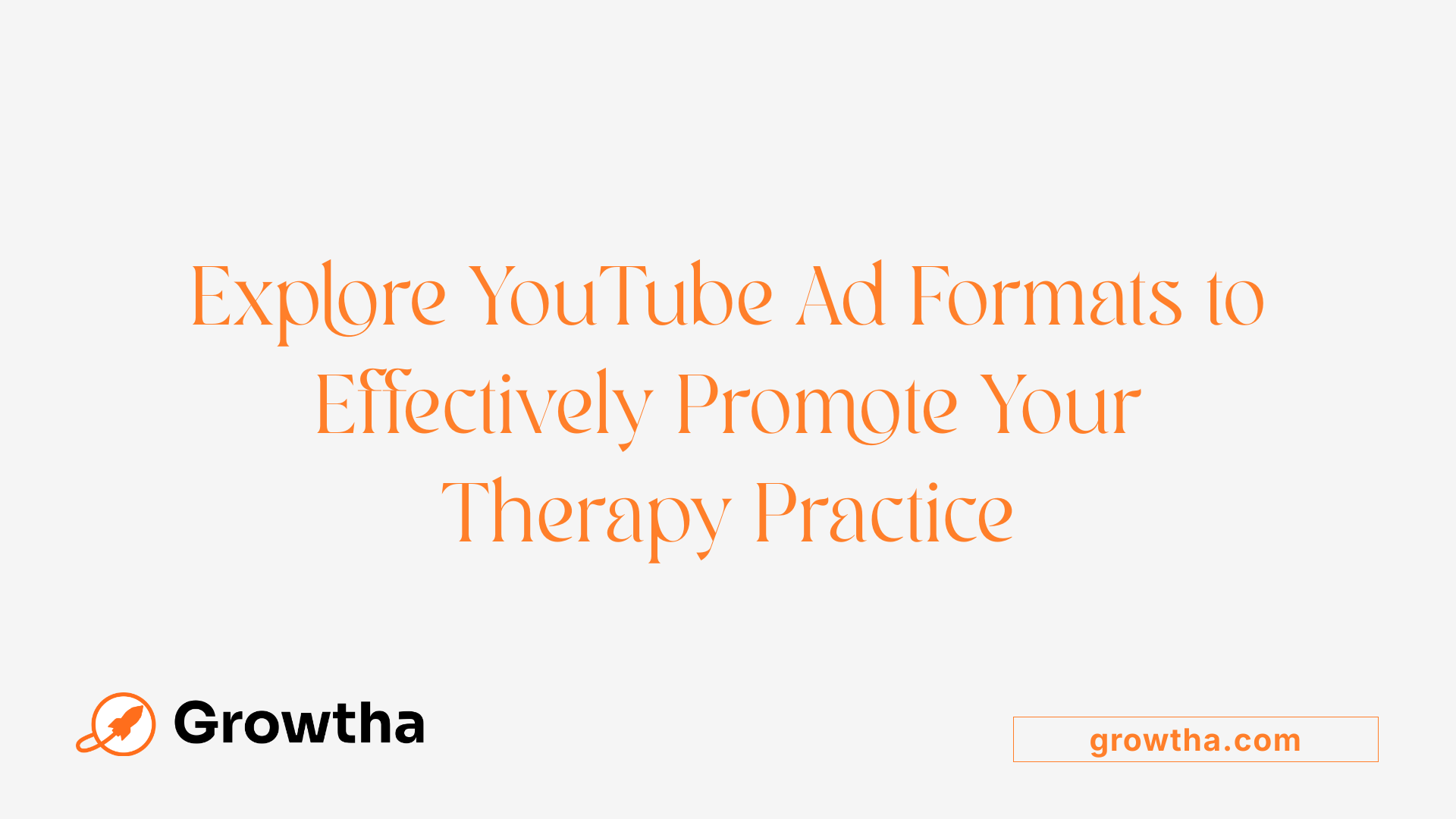 YouTube offers multiple ad formats that can be highly effective for therapists seeking to connect with potential clients. These formats include skippable and non-skippable in-stream ads, bumper ads, overlay ads, and sponsored cards, each serving distinct purposes.
YouTube offers multiple ad formats that can be highly effective for therapists seeking to connect with potential clients. These formats include skippable and non-skippable in-stream ads, bumper ads, overlay ads, and sponsored cards, each serving distinct purposes.
Skippable in-stream ads allow viewers to skip after a few seconds, making them ideal for raising awareness without overwhelming viewers. Non-skippable ads, on the other hand, must be watched in full, which can be useful for delivering concise, impactful messages about your therapy services.
Bumper ads are short, six-second video clips that are non-skippable, perfect for reinforcing a key message quickly. Overlay ads appear as semi-transparent banners during videos, providing a discreet way to promote your practice. Sponsored cards and extensions can display additional information or links related to your therapy services, encouraging viewers to explore your website or book a consultation.
For therapists, leveraging these ad formats involves creating engaging, targeted campaigns that focus on your niche and local audience. Using compelling ad copy, relevant keywords, and direct call-to-actions can increase inquiries and appointments.
Google Ads also offers search ads and ad extensions like sitelinks or callouts, which help enhance your visibility and provide quick access to your contact information or therapy specialties. Regularly monitoring campaign performance—analyzing metrics like click-through and conversion rates—and refining your approach ensures sustained growth.
Incorporating these varied ad formats into your marketing strategy can significantly boost your practice’s online presence, attract new clients, and demonstrate your expertise effectively through targeted, engaging advertising.
Creating and Managing Effective YouTube Ads Campaigns
What are the best practices for creating and optimizing YouTube advertising campaigns for therapy practices?
Developing successful YouTube ad campaigns for therapists requires a strategic approach that focuses on targeting, content, ethical standards, and ongoing adjustments.
First, define your ideal audience clearly. Use demographic data, interests, and intent-based targeting to reach potential clients who are seeking therapy services or related information.
Next, craft authentic, professional videos that establish trust and demonstrate your expertise. Keep content concise, between 2-5 minutes, and incorporate storytelling, visuals, and a genuine tone to connect with viewers.
Utilize different ad formats such as in-stream ads, discovery ads, and bumper ads to suit your campaign goals. Always include a clear call-to-action, like scheduling an appointment or visiting your website.
Ethical compliance is crucial. Ensure your ads include necessary disclaimers, maintain confidentiality, and adhere to HIPAA regulations. This builds credibility and aligns your advertising with professional standards.
Monitoring campaign performance is essential. Track metrics like view-through rates, engagement, and conversions. Use this data to optimize targeting, refine your content, and adjust bids.
Supporting your YouTube campaigns with a well-optimized website, local SEO strategies, positive reviews, and active social media engagement amplifies your reach and reinforces your message.
By combining targeted campaigns, ethical advertising, quality content, and data-driven adjustments, therapists can effectively attract and connect with new clients through YouTube.
Ethical Considerations in YouTube Therapy Advertising
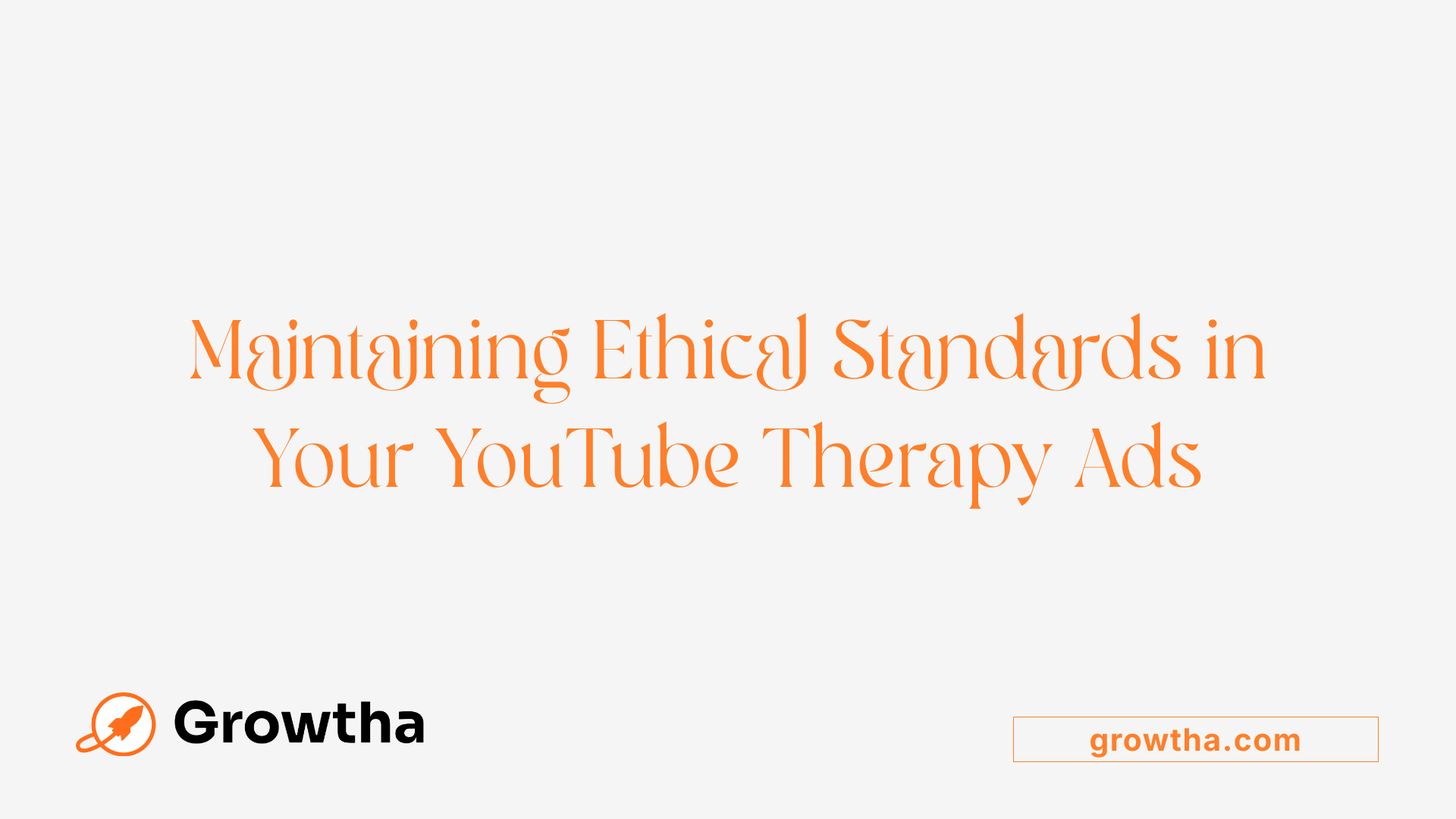 When promoting therapy services on YouTube, maintaining high ethical standards is essential to protect clients and uphold the integrity of the profession. Therapists must be transparent and honest in their advertising, clearly representing their credentials, areas of expertise, and training without exaggeration or false claims. This honesty builds trust with potential clients and ensures compliance with legal and professional guidelines.
When promoting therapy services on YouTube, maintaining high ethical standards is essential to protect clients and uphold the integrity of the profession. Therapists must be transparent and honest in their advertising, clearly representing their credentials, areas of expertise, and training without exaggeration or false claims. This honesty builds trust with potential clients and ensures compliance with legal and professional guidelines.
Respecting client confidentiality is another critical aspect. Therapists should avoid sharing identifiable information or testimonials about specific cases without explicit written consent. Public discussions of individual client situations are unethical and can harm client privacy.
Legal and ethical compliance should underpin all marketing efforts. This involves adhering to regulations from licensing boards and avoiding manipulative tactics or guarantees about therapeutic outcomes. Promoting realistic expectations helps foster a responsible and credible practice.
Inclusive messaging promotes diversity and respects different backgrounds. Using inclusive language and visual representations ensures that advertising does not alienate or marginalize any group, fostering a welcoming environment.
Overall, therapists must balance effective marketing with their ethical duties, ensuring their YouTube presence promotes trust, respects clients' rights, and aligns with the highest standards of their profession.
Content Ideas and Guidelines for Therapy-Related YouTube Ads
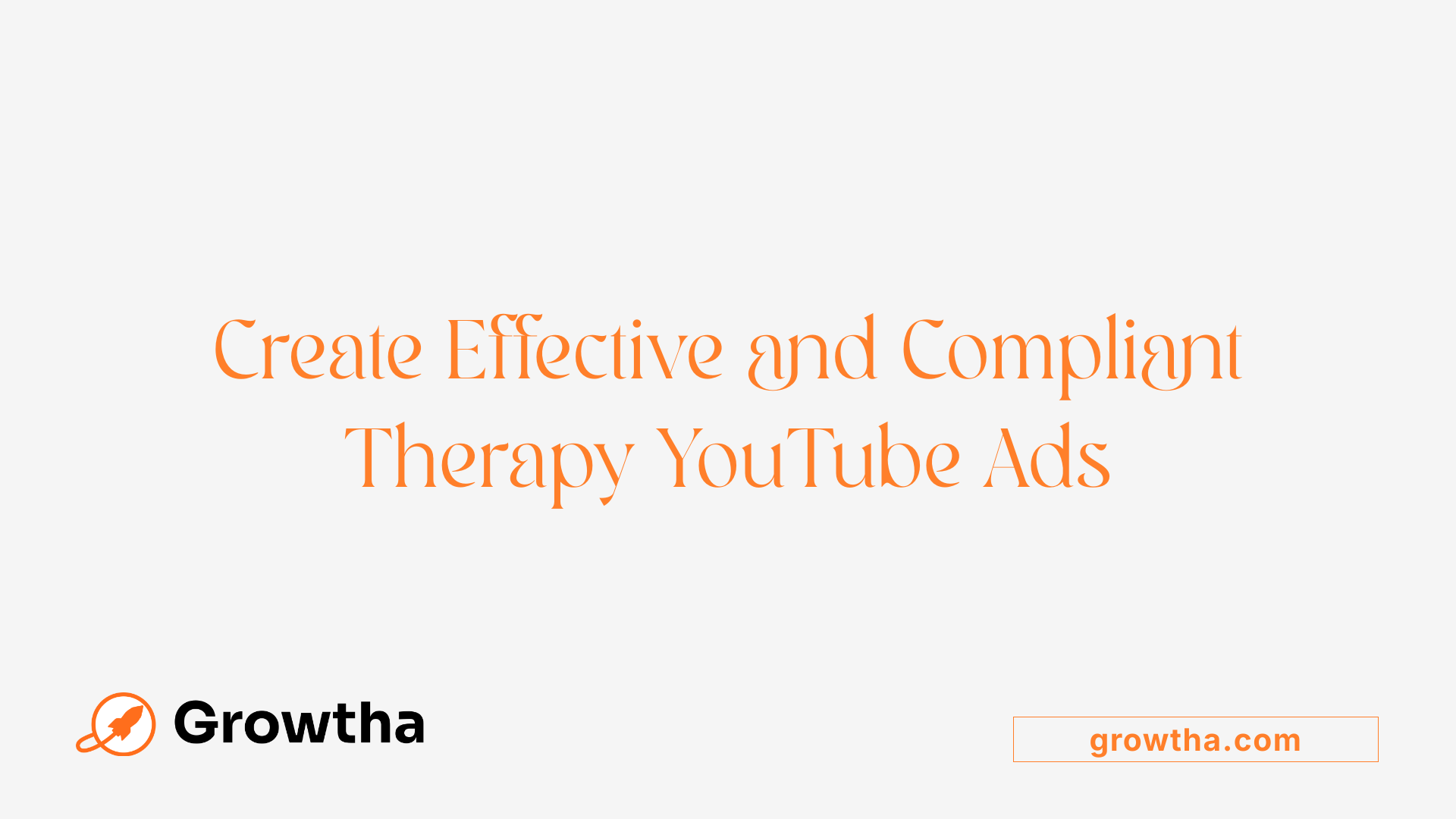 When designing YouTube ads for therapy practices, it’s vital to craft messages that are empathetic, professional, and build trust. Effective content includes client testimonials that share successful outcomes, educational videos that explain therapy benefits, and insights into common mental health concerns. Using positive language and a hopeful tone encourages viewers to consider seeking help.
When designing YouTube ads for therapy practices, it’s vital to craft messages that are empathetic, professional, and build trust. Effective content includes client testimonials that share successful outcomes, educational videos that explain therapy benefits, and insights into common mental health concerns. Using positive language and a hopeful tone encourages viewers to consider seeking help.
In your ads, combine social proof, such as reviews or success stories, with clear calls to action, like visiting your website or booking a free consultation. This approach helps motivate viewers to engage further with your practice.
Stick to YouTube’s advertising policies by avoiding prohibited topics such as illegal substances, adult content, or anything inappropriate for children. Focus on contextual targeting—placing your ads on relevant videos or search results related to mental health and wellness.
Optimizing your ad content with relevant keywords enhances visibility and ensures your message reaches those most in need. Always aim for authentic and respectful messaging that reassures potential clients about your professionalism and confidentiality.
Enhance Your Practice With Smart YouTube Advertising
Leveraging YouTube advertising for therapy practices offers a vast opportunity to reach potential clients effectively and ethically. By creating authentic, informative content, employing strategic targeting, and choosing appropriate ad formats, therapists can build trust and expand their reach. Embedding videos on websites, promoting across social channels, and continually optimizing campaigns with data insights will ensure sustained growth. Remember, maintaining transparency, respecting client privacy, and aligning with professional standards are essential for ethical success. Embrace these strategies to elevate your practice and connect more deeply with those seeking your support.
References
- Use YouTube to Promote Your Practice
- How to Use YouTube to Grow Your Therapy Practice - Brighter Vision
- 11 Effective Ways to Advertise Your Therapy Practice (2024)
- How to Use YouTube to Promote Your Therapy Practice
- 11 Effective Ways to Advertise Your Therapy Practice (2024)
- Effective YouTube Advertising for Mental Health Clinics - ClinicFlow
- Video Marketing Secrets for Therapists - Clarity Cooperative
- Use YouTube to Promote Your Practice







